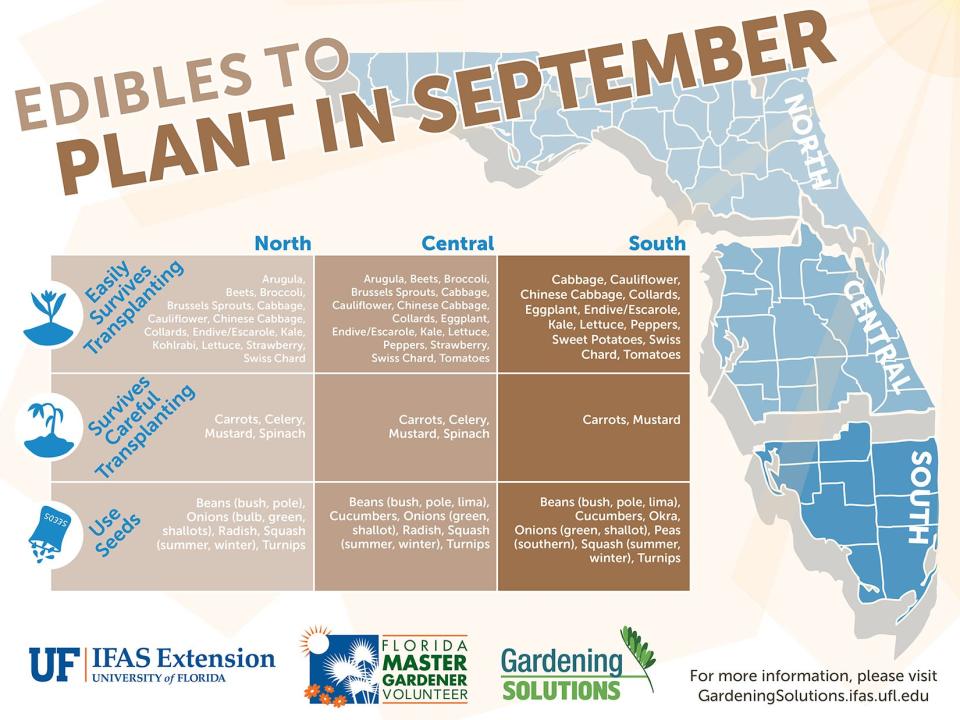From the Extension: Think about starting your vegetable garden now

While temperatures are still high, now is the time to prepare for your fall vegetable garden. Garden planning can be a little overwhelming, especially for those new to gardening. Many may think they require large areas to plant a vegetable garden.
This is not the case. Many plants do well in containers. The key is sunlight. Most edible plants require 5 to 6 hours of sun a day. For those that do not have a sunny location, or perhaps only a balcony to grow on, you can purchase grow lights and timers and still grow your vegetables.
More From the Extension: Achieving balance for your health
Pet-friendly greenery: Pick the right houseplants to live with your pets
Remember that edible plants that produce fruit require pollinators. Do not keep them in screened areas. You will see reduced fruit to harvest. You may even have no fruit production at all.
Once you determine where you can grow your plants based on light, next select what you will grow the pants in. Raised beds, containers, in-ground, hydroponic, there are so many options. Raised beds allow you to reach your plants more easily, and in some cases, they significantly reduce soil best issues.
What it depends on is how you choose to raise the best places on the soil or elevated raised bests with an enclosed soil system. Containers can be anything from pots to recycles containers. Be sure they are clean and have drainage holes. Do not use containers that help with chemicals or soaps/detergents. In-ground gardening often leads to larger harvests than container gardens.
Hydroponic gardening offers a variety of setups to fit most gardening budgets, though it does may limit the plants that you grow. Select whichever method works best for your situation.
For those growing in the ground, get a soil sample to see if your site requires any soil amendments before planting. Our office provides free soil pH tests for homeowners. Alternatively, you can send soil to the UF Soil Lab for a small fee. The UF Soil Lab test also looks at the nutritional levels in the soil.
Planning your garden is the next step. The book ‘Vegetable Gardening in Florida’ by James M. Stephens is a great resource and includes examples of good edible garden designs.
When designing, remember that plants can grow close together. Think of the three sisters of agriculture: corn, b Beans and squash. Corn acts as a trellis for beans. Squash then acts like a ground cover reducing weeds and soil water loss. After you plan your design, you start some seeds for transplant. UF/IFAS Extension offers some great resources on which plants to grow each month, as seen here.

Contact our office with your specific gardening questions.
An Equal Opportunity Institution. UF/IFAS Extension, University of Florida, Institute of Food and Agricultural Sciences, Andra Johnson, Dean. Single copies of UF/IFAS Extension publications (excluding 4-H and youth publications) are free to Florida residents from county UF/IFAS Extension offices.
Jamie Daugherty is the Residential Horticulture Agent of the UF/IFAS Lake County Extension office. Contact our office with questions at lakemg@ifas.ufl.edu.
This article originally appeared on Daily Commercial: From the Extension: Consider starting a vegetable garden now
